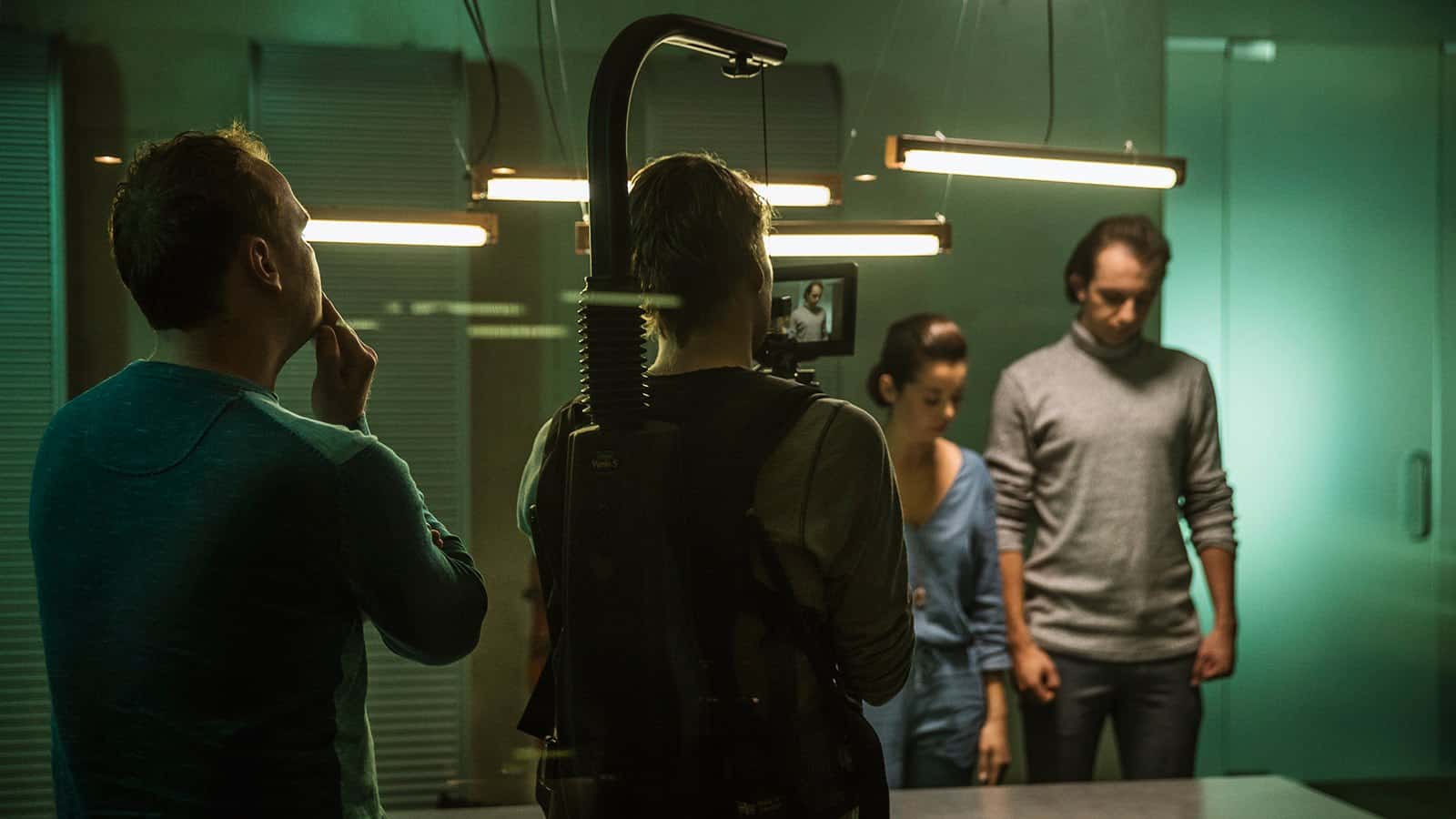Nanak McCann is a Filmmaker and Set Designer, who was raised on a hippie commune in Northern California, and spent his teens living in Mexico with his Vietnam-Veteran father. A Rosary and a Diamond Ring is Nanak’s second film, and the story deals heavily with the difficulties of living with PTSD – a subject that is close to Nanak’s heart.
The film follows two soldiers, Butch and Joe, on their first day home from the war in Vietnam, as they walk the city of San Francisco, before saying goodbye. They tell stories over beers, reflecting on the horrors of war, and their innocence lost. Joe gives Butch his most prized possession, his mother’s rosary necklace. After the two friends part ways, Joe goes home. His mother, Virginia, is ecstatic but also concerned that the child she knew has been forever changed. Joe falls into a twenty-four hour deep sleep. All the terrible things he saw, and did, pass through him in a long nightmare. When Joe wakes Virginia makes him breakfast. A healing process has began but both mother and son quietly wonder if it will ever find its end.
A Rosary and a Diamond Ring screened at the Austin Lift-Off Film Festival. We interviewed Writer/Director Nanak McCann to hear more about his personal connection to the story and which filmmakers inspire him, as well as his plans for the future of the project.
A Rosary and a Diamond Ring has been short-listed for Best Short Film for the 2023 Lift-Off Season Awards.
Interview by Ollie Baines
What is your film about? And why did you want to make it?
“A Rosary and a Diamond Ring is a four-part story that follows two Vietnam war veterans over many decades. I shot Part One as a proof of concept short film. It follows the characters, Butch and Joe, on their first day home from the war in Vietnam. All four parts will deal with family dynamics, and how trauma and PTSD effect both the veteran, and their families. In part one Joe goes home to his mother, and we see hints of a healing process begin but we also end on an ominous note. It’s clear he has a long road of recovery from things he saw and did in combat.
“My father is a disabled veteran, so I’m telling the story both from a place of love, and experience. I chose to tell a story about Vietnam Veterans, because I think they had a particularly hard road coming home. Homelessness and divorce rates among veterans was, and is, very high. Unfortunately the story is just as relevant today, as we have another generation of veterans dealing with similar issues. As a country and a community, the US doesn’t have a great history of giving veterans all the resources they need.”
Who are your 3 biggest filmmaking inspirations and why?
“It’s hard to pick three but for personal reasons, I’d start with Oliver Stone. Platoon played a key role in my understanding of my father’s experience. He took me to see that film at a very young age. Afterward he said that was what he had experienced. Stone’s Vietnam trilogy of Platoon, Born on the Fourth, and Heaven on Earth have so much heart and purpose. Those films were a gift to people affected by that war – three beautiful stories.
“Ang Lee. His early films feel so personal and beautiful. They focused on family and relationships. There’s a magic to his filmmaking. Eat Drink Man Woman and Brokeback Mountain are two all time favourites. Ang always has great use of natural lighting in his films.
“Spike Lee’s film from the 1990’s were big for me. I started paying attention to the artistry of film in High School. At that time, every film Lee made seemed like a burst of creativity. I think the camera movement in particular blew my mind – putting the audience inside the mind of the protagonist with really bold camera techniques. Mo’ Better Blues, Do the Right Thing, Jungle Fever, He Got Game. Even with all the fancy styling Spike’s films had, many of those early films ended up being about family and relationships. The last ten minutes of Mo’ Better Blues is some of the most bold and creative storytelling I’ve seen to this day.”
What is next for you as a filmmaker?
“Finishing A Rosary and a Diamond Ring. I conceptualised the story so each part can be filmed separately. Part Two (Hanoi Hilton) takes place eight years after Part One. The later acts have roughly the same time separation. I’m in prep to shoot Part Two on a budget, while figuring out a full plan for the rest of the film. I have a few other projects I’m involved in as a writer that I’m excited about, but A Rosary and a Diamond Ring as a feature film will be the next thing I direct.”
Don’t forget to view the complete Winners and Special Mentions and Shortlisted Season Awards Filmmakers list from Austin Lift-Off Film Festival.







